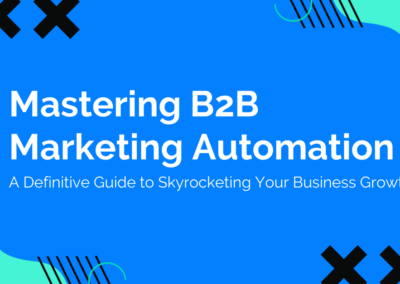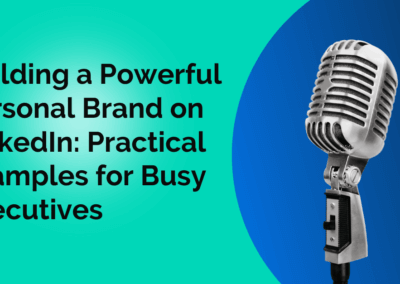Demand generation is what a brand does to create awareness and interest. Making the public conscious of their business is a key factor in leading them to want to learn more. It’s any marketing effort your B2B company makes to bring people into your sales funnel, with an emphasis on personalization.
As mentioned in our blog post, “The Impact of Demand Generation on Sales Cycles,” the B2C world can use demand generation in areas with longer sales cycles, but it’s most common in the B2B world. B2B products and services aren’t typically purchased impulsively, so commercials and traditional ad strategies don’t always work in such niche markets. So think outside the box when it comes to your demand gen strategies. Try using tools like search engine advertising, SEO, webinars, and free trials.
According to the SaaS platform, Integrate, demand generation “supports the entire marketing and sales cycle, from initial prospect interest and lead generation to lead nurturing and sales enablement to first sale and cross-sell.”
Isn’t that just lead generation?
Well, no. But I can see why you’d think so. The best way to describe the relationship between lead and demand generation is that the two strategies overlap. Like lead gen, demand generation is a crucial part of the sales cycle, but the two are not the same. Unlike lead generation, demand gen in and of itself doesn’t involve a deal or a follow-up. Demand gen is what a brand does to create awareness and interest. Lead gen is more like the “how” part of the equation. Now that consumers know what you are, how are you going to make that interest work for you?
How demand generation ties to inbound marketing
In addition to confusing demand generation for lead generation, many people mix it up with inbound marketing. While an effective demand gen strategy will certainly use inbound marketing strategies (and outbound ones, too), it’s far too simplistic to consider them the same.
Part of the reason demand generation is confused for so many other aspects of the marketing and sales processes is that it’s not so tangible. There isn’t a set “demand generation” spot on the sales funnel. In many cases, your demand gen efforts are starting to take place before a customer even enters the buying journey. HubSpot refers to demand gen programs as touchpoints throughout the conversion optimization and sales cycles. You could say that it’s present throughout the entire funnel.
All about the content
Creating content is the most common method of demand gen. Most of the time, that content is answering questions that consumers may have, or attempting to solve a problem. Online content like blogs, whitepapers, and videos that are search engine optimized help increase your chances that people who can use your services will find what you have to offer. Demand generation can also be highly interactive. Webinars and event marketing are increasingly popular ways to bring awareness to your brand while engaging directly with consumers. In such a short time, social media has also become a crucial method of demand generation.
Gone are the days of boring, bland corporate presences on social platforms. Brands are taking the opportunity of free publicity that social media gives them by creating new, approachable profiles that allow consumers to see them as more than a brand. Having an ongoing presence that keeps potential buyers (and even people who have already purchased) coming back allows you to nurture relationships long term.

The need for relevance
Demand gen is thoughtful and engaging. Cold emails and banner ads certainly have their place in the marketing and sales worlds, but they do not fall under the demand generation umbrella. That’s not to say that you have to completely write marketing automation out of your demand gen strategy, though.
Founder of Seas Marketing, Kari Seas, told Marketingland that the right marketing automation platform will still allow you to establish those deep relationships with your leads and make it simpler to have an ongoing conversation with them.
The whole purpose of your demand gen strategy is that it creates interest around your brand. That requires your efforts to be relevant to your consumers. Targeting individual customers at specific points in their buyer’s journey is imperative. Allowing your sales and marketing teams to work together on this strategy really helps ensure you’re contacting each lead at the right time. You don’t want your efforts to be wasted on hard-selling a casual browser or have someone who was looking to make a purchase slip through the cracks.
It should be data-driven
All marketers know that data is everything when it comes to refining your process. There’s nothing like cold, hard numbers to let you know if your marketing efforts are driving the progress and revenue you’re aiming for. So why should your sales and marketing teams have to each find out those numbers for themselves?
Let’s continue the discussion of how important it is for the sales and marketing teams to work together. Wordstream states that demand generation is a “long-term relationship between a brand’s marketing and sales teams, and prospective customers.”
When both teams work closely, they’re able to share pertinent information about potential leads with each other. This allows each lead to be nurtured appropriately. When the marketing team creates content and evaluates its performance, they’re able to relay that information. Doing so allows your sales team to determine which leads are ready to take the leap and which ones need a little more nurturing.
Sure, in theory, each of these teams can take on these tasks themselves. But why not combine your efforts and spend that saved time moving your leads through the sales funnel? You know what they say: work smarker, not harder.
(Oops, did we mean “smarter?”)
Why it matters
Integrate pointed out that even though you can have lead generation without demand generation, you shouldn’t. Including both strategies into your marketing efforts will help you attract more quality leads and engage potential leads to the point of becoming sales-ready.
“Using wider demand generation tactics typically leads to more intelligent lead generation efforts due to a deeper understanding of bottom-funnel performance,” Integrate also stated. “By closing the loop on marketing performance, demand marketers can fine-tune their lead generation efforts to capture more qualified opportunities. With better brand authority and customer trust, they may increase their visitor-to-lead conversion rates.”
Simply put, demand generation streamlines and refines your marketing strategy, ensuring your market qualified leads are nurtured at the right time (and your other leads are on their way to becoming MQLs!). As a marketer, it saves you time and minimizes the guesswork, allowing you to target effectively. What could be more important than that?




